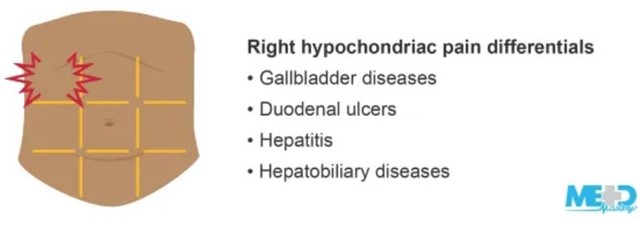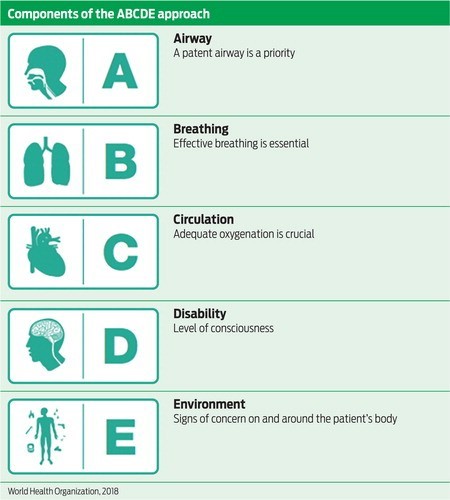A nurse is caring for a group of clients on an intrapartum unit. Which of the following findings should be reported to the RN immediately?
A client who is at 32 weeks of gestation and is experiencing irregular, frequent contractions is tearful
A client who has preeclampsia has 2+ patellar reflexes and 2+ proteinuria
A client who is at 28 weeks of gestation and receiving terbutaline reports fine tremors
A client who has preeclampsia and reports epigastric pain and unresolved headache
The Correct Answer is D
Choice D reason: A client who has preeclampsia and reports epigastric pain and unresolved headache should be reported to the RN immediately, as these are signs of severe preeclampsia and impending eclampsia, which can lead to seizures, coma, and death. The client may need anticonvulsant medication, magnesium sulfate infusion, and delivery of the fetus.
Choice A reason: A client who is at 32 weeks of gestation and is experiencing irregular, frequent contractions is tearful may have preterm labor, which should be monitored and treated accordingly. However, this is not as urgent as choice D, as the contractions may subside with hydration, rest, or tocolytic medication.
Choice B reason: A client who has preeclampsia has 2+ patellar reflexes and 2+ proteinuria may have mild preeclampsia, which should be managed with antihypertensive medication, bed rest, and fetal monitoring. However, this is not as urgent as choice D, as the reflexes and proteinuria are not indicative of severe preeclampsia or eclampsia.
Choice C reason: A client who is at 28 weeks of gestation and receiving terbutaline reports fine tremors may have a common side effect of terbutaline, which is a beta-adrenergic agonist that relaxes uterine smooth muscle and inhibits contractions. However, this is not as urgent as choice D, as the tremors are usually transient and benign. The nurse should monitor the client's vital signs, blood glucose, and fetal heart rate.

Nursing Test Bank
Naxlex Comprehensive Predictor Exams
Related Questions
Correct Answer is A
Explanation
Choice A reason: Massage the client's fundus is correct, as this is the first action the nurse should take according to the ABCDE priority framework. Saturating a perineal pad in 10 min indicates excessive bleeding and possible postpartum hemorrhage, which can compromise the client's airway, breathing, and circulation. Massaging the fundus can stimulate uterine contraction and reduce blood loss.
Choice B reason: Check the client's blood pressure is incorrect, as this is not the first action the nurse should take, although it is important to monitor for signs of shock. Checking the blood pressure does not address the cause of bleeding or prevent further blood loss.
Choice C reason: Administer oxytocin is incorrect, as this is not the first action the nurse should take, although it may be indicated later. Administering oxytocin requires a provider's order and may have adverse effects such as nausea,
vomiting, headache, or water intoxication. The nurse should first atempt to control bleeding by massaging the fundus and then administer oxytocin as ordered.
Choice D reason: Observe for pooling of blood under the butocks is incorrect, as this is not the first action the nurse should take, although it can help estimate blood loss. Observing for pooling of blood does not address the cause of bleeding or prevent further blood loss. The nurse should first atempt to control bleeding by massaging the fundus and then assess for other signs of hemorrhage.

Correct Answer is B
Explanation
Choice B reason:
A fundus that is elevated and displaced from the midline indicates a full bladder, which can interfere with uterine contraction and increase the risk of hemorrhage. The nurse should assist the client to void or catheterize her if necessary.
Choice A reason:
Moderate swelling of the labia is a normal finding after vaginal delivery, and does not indicate a need to urinate. The nurse should apply ice packs and perineal pads to reduce edema and discomfort.
Choice C reason:
Moderate lochia rubra is a normal finding during the first 24 hr postpartum, and does not indicate a need to urinate. The nurse should monitor the amount and color of lochia, and change the perineal pads as needed.
Choice D reason:
A blood pressure of 130/84 mm Hg is within the normal range for a postpartum client, and does not indicate a need to urinate. The nurse should monitor the blood pressure for signs of hypertension or hypotension, which can indicate complications such as preeclampsia or hemorrhage.
Whether you are a student looking to ace your exams or a practicing nurse seeking to enhance your expertise , our nursing education contents will empower you with the confidence and competence to make a difference in the lives of patients and become a respected leader in the healthcare field.
Visit Naxlex, invest in your future and unlock endless possibilities with our unparalleled nursing education contents today
Report Wrong Answer on the Current Question
Do you disagree with the answer? If yes, what is your expected answer? Explain.
Kindly be descriptive with the issue you are facing.
